-
Fire retardant shows promise -- if given space
Scientists have demonstrated that the more widely and uniformly dispersed nanoscale plates of clay are in a polymer, the more fire protection the nanocomposite material provides; when polymer — a type of polystyrene, used in packaging, insulation, plastic cutlery, and many other products — is imbued with nanometer scale plates of montmorillonite, the combination can create a material with unique properties or properties superior to those achievable by each component — clay or polymer — on its own
-
-
A first: Flying car cleared for road
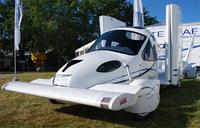
The U.S. Department of Transportation gave Massachusetts-based Terrafugia two important exemptions which would allow the company to offer its flying car — the Transition — to customers next year; the exemptions allow the company to use different tires and different laminated protective glass, and come on top of a 110 lb. allowance the FAA gave the company last year; these allowance and exemptions mean the flying car will not be treated as plane by the FAA, and those who fly it will not have to obtain a pilot license
-
-
Roving robot can rescue people, detonate bombs
Northeastern University student-researchers have created a roving robot that can locate and rescue victims of natural disasters or participate in military missions that are too dangerous for soldiers; students created a complex algorithm that would enable the robot to locate people — or even bombs that are detonated through mobile phones
-
-
New technology makes textiles permanently germ-free
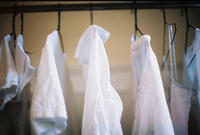
University of Georgia scientist develops a new technology that makes textiles permanently germ-free, targeting healthcare-associated infections; the new material effectively kills a wide spectrum of bacteria, yeasts, and molds that can cause disease, break down fabrics, create stains, and produce odors
-
-
"Sensing skin" to monitor concrete infrastructure health inexpensively
In 2009, the American Society of Civil Engineers (ASCE) assigned the grade D to the overall quality of infrastructure in the United States and said that ongoing evaluation and maintenance of structures was one of five key areas necessary for improving that grade; civil engineers recently proposed a new method for the electronic, continual monitoring of structures
-
-
Nanowire-based sensors detect volatile organic compounds
Researchers have made nano-sized sensors that detect volatile organic compounds — harmful pollutants released from paints, cleaners, pesticides, and other products — which offer several advantages over today’s commercial gas sensors, including low-power room-temperature operation and the ability to detect one or several compounds over a wide range of concentrations
-
-
New commuting method: Personal Aerial Vehicles
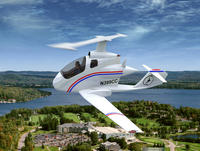
Researchers in Germany have an idea for solving the growing congestions in urban centers: a Personal Aerial Vehicles (PAVs) for traveling between homes and working places; the PAVs will fly at low altitude in urban environments, thus making it unnecessary to change current air-traffic control regulations
-
-
NFL in search of new helmets to reduce brain trauma

Researchers at the NFL’s Southern Impact Research Center are currently exploring ways to install sensors on helmets to measure the amount of head trauma players receive; league officials hope that the sensors can eventually be installed on all helmets to provide accurate data that can then be used to adjust game rules and construct better helmets that will reduce the number of concussions
-
-
Navy funds development of new explosives detection technology
The Navy recently awarded researchers at Texas Tech University a four year $1.2 million grant to develop a more effective method to detect explosive materials; the project is spearheaded by four Texas Tech professors specializing in chemical engineering; one professor explained, “In layman’s terms, basically we’re trying to enhance detection for explosives”
-
-
New smartphone app reduces information overload
Researchers have developed a new smartphone application to avoid information overload by processing large quantities of data in real time and presenting it in user friendly clusters; the software is the first to allow a user to make real time adjustments to how information is displayed on a phone as it is acutely “aware” of how cluttered the screen is; the new application can be used in a wide array of instances including natural disasters, monitoring multiple hospital patient’s heart levels, and mapping the locations of first responders deployed during an emergency
-
-
Emergency responders could have jetpacks by year's end
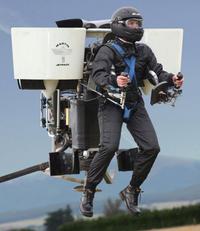
Emergency responders in New Zealand could soon be zipping around on personal jetpack; last month, Glenn Martin, an inventor based in New Zealand, successfully flew his jetpack up to a height of nearly 5,000 feet; Martin has been hard at work on the jetpack for the last thirty years and hopes to have his “jetski for the skies” commercially available within eighteen months; the jetpack is essentially two two-liter V4 engines strapped to a carbon fiber frame; the device is wingless and is controlled by two joysticks and can be flown with little pilot training; Martin says that the first people to use the device will be emergency responders conducting search and rescue missions
-
-
New tech taps Earth's deep heat
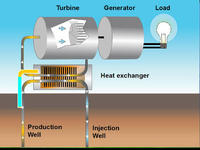
Established methods for transforming Earth’s heat into electricity involve extracting hot water from rock formations several hundred feet from the Earth’s surface at the few natural hot spots around the world, then using the hot water to turn power-producing turbines; University of Minnesota researchers developed a new system — CO2-plume geothermal system, or CPG — which uses high-pressure CO2 instead of water as the underground heat-carrying fluid; the method is expected not only to produce renewable electricity far more efficiently than conventional geothermal systems, but also help reduce atmospheric carbon dioxide (CO2) — dealing a one-two punch against climate change
-
-
House drastically cuts DHS science and technology

The Republican majority in the House last week passed a proposed DHS budget which drastically cuts the department’s Science & Technology Directorate’s (S&T) budget by 52 percent, from $827 million to $398 million; the Obama administration has requested $1.2 billion for that program in fiscal year 2012, which begins on 1 October; the S&T reductions are part of a $1.1 billion reduction in DHS’s overall budget, now $43.4 billion; the proposed DHS budget is $1 billion lower than the FY 2011 funding level, and $3 billion lower than the Obama administration’s request ; DHS officials say the decrease in S&T’s budget will wipe out dozens of programs, stalling the development of technologies for border protection, detection of bio-hazards, cargo screening; also cut will be research into domestic IED detection, leaving mass transit vulnerable to attacks
-
-
WWI, WWII-era dazzle camouflage of benefits in modern warfare

Warships in both the First and Second World Wars were painted with dazzle camouflage: startling geometric patterns aimed at confusing the enemy rather than concealing the vessel; while dazzle camouflage would probably not have successfully distorted ships’ speeds in the two World Wars, it could play a role in today’s battlefields where fast-moving army vehicles frequently come under attack from shoulder-launched, rocket-propelled grenades
-
-
Bacteria designed for sleuthing
Seven Cambridge University undergraduates spent the summer of 2009 genetically engineering bacteria to secrete a variety of colored pigments, visible to the naked eye; they designed standardized sequences of DNA, known as BioBricks, and inserted them into E. coli bacteria — so the bacteria can now change its color to red, yellow, green, blue, brown, or violet; the bacteria can be programmed to do useful things, such as indicate whether drinking water is safe by turning red if they sense a toxin; other uses for the design bacterium include monitoring food additives, patenting issues, personalized medicine, terrorism, and new types of weather
-
More headlines
The long view
New Technology is Keeping the Skies Safe
DHS S&T Baggage, Cargo, and People Screening (BCP) Program develops state-of-the-art screening solutions to help secure airspace, communities, and borders
Factories First: Winning the Drone War Before It Starts
Wars are won by factories before they are won on the battlefield,Martin C. Feldmann writes, noting that the United States lacks the manufacturing depth for the coming drone age. Rectifying this situation “will take far more than procurement tweaks,” Feldmann writes. “It demands a national-level, wartime-scale industrial mobilization.”
How Artificial General Intelligence Could Affect the Rise and Fall of Nations
Visions for potential AGI futures: A new report from RAND aims to stimulate thinking among policymakers about possible impacts of the development of artificial general intelligence (AGI) on geopolitics and the world order.
Keeping the Lights on with Nuclear Waste: Radiochemistry Transforms Nuclear Waste into Strategic Materials
How UNLV radiochemistry is pioneering the future of energy in the Southwest by salvaging strategic materials from nuclear dumps –and making it safe.
Model Predicts Long-Term Effects of Nuclear Waste on Underground Disposal Systems
The simulations matched results from an underground lab experiment in Switzerland, suggesting modeling could be used to validate the safety of nuclear disposal sites.
